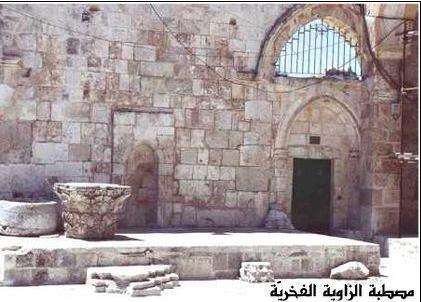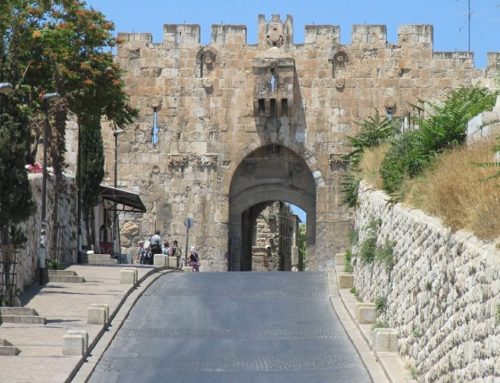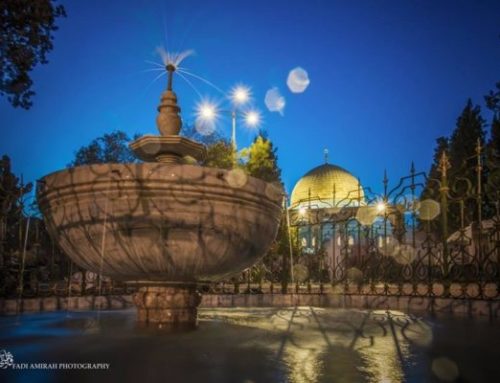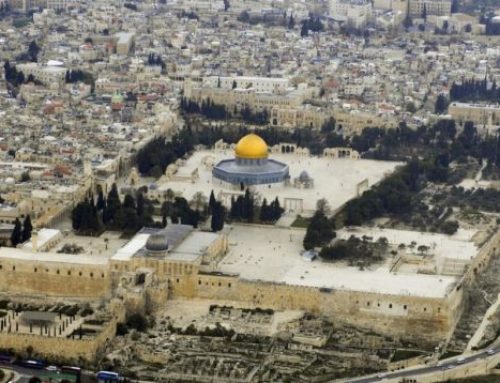
These terraces were added to expand the available space available to people in the vicinity of the mosque in an aesthetically pleasing way.. They are often used for prayer, and have a mihrab[2] to indicate the direction of the qibla, as well as spaces for different religious study circles and classes.[3]
Number of Terraces in Al-Aqsa
Some sources indicate that throughout Islamic history, there have been a maximum of thirty-eight terraces in Al-Aqsa, while others indicate much less. Regardless–the known terraces are all located near water facilities and the mosque gates. Most were built in the Mamluk and Ottoman periods, whereas some were constructed more recently.[4]Below is a list of the contemporary terraces of the Al-Aqsa mosque:[5]
| The Al-Basiri Terrace | The Eastern Arcature Terrace |
| The Sheikh Budeir Terrace | The Terrace of the Eastern Level Entrance |
| The Suleiman Terrace | The NorthEastern Terrace of the Eastern Sanctums |
| The Translation Terrace | The Southern Terrace |
| The Al-Zaher Terrace | The al-Karak Terrace |
| The Qaitbai Terrace | The Moroccan Terrace |
| The Ali Pasha Terrace | The Qattanin Terrace |
| The Tenkise School Terrace | The North Qattanin Gate Terrace |
| The Al-As’ardiah School Terrace | The Iron Gate Terrace |
| The Hetta Gate Terrace | The Honorary Terrace |
| The Suleiman Dome Terrace | The Moroccan Mosque Terrace |
| The Al-Ghazali Terrace | The Funerals Terrace |
| The Ablution Terrace | The Mercy Gate Terrace |
| The Goblet Terrace | |
| The Great Eastern Terrace | |
| The Sabra and Shatila Terrace | |
| The Al-Toumar Terrace | |
| The Cylindrical Terrace | |
| The Pine Terrace | |
| The Floral Terrace | |
| The Sha‘alan Water Facility Terrace | |
| The Qasim Pasha Terrace | |
| The Proximity of the Eastern Sanctums Terrace |

[1] Hassan Mustafa Khater, Al-Quds: the Educational Pictorial Atlas (Jordan: International Jerusalem Center for Media, International Studies and Documentation, 2013), 170 and “Terraces and Niches of Al-Aqsa,” last modified March 14, 2016, www.aljazeera.net/encyclopedia/citiesandregions/2016/2/28/مصاطب-ومحاريب-الأقصى
[2] a niche in the foremost area of the prayer space where the Imam leads from
[3] Khater, Al-Quds, 170
[4] Khater, Al-Quds, 170 and “Al-Aqsa Terraces,” https://sites.google.com/site/qods999/malm-almdynte/almalm-alaslamyte/msatb-almsjd-alaqsy
[5] “Terraces and Niches of Al-Aqsa,” last modified March 14, 2016, www.aljazeera.net/encyclopedia/citiesandregions/2016/2/28/مصاطب-ومحاريب-الأقصى and “The Terraces,” alaqsa-archive.com/ar/?page_id=1749&lang=en






